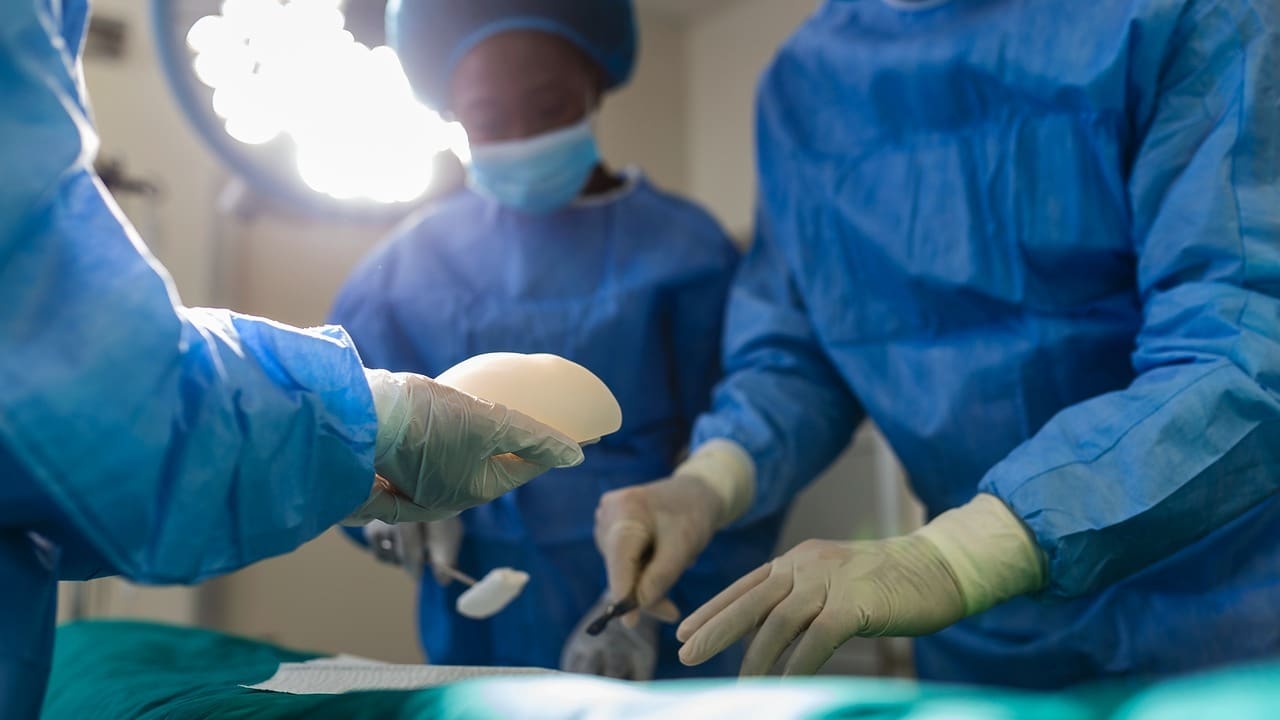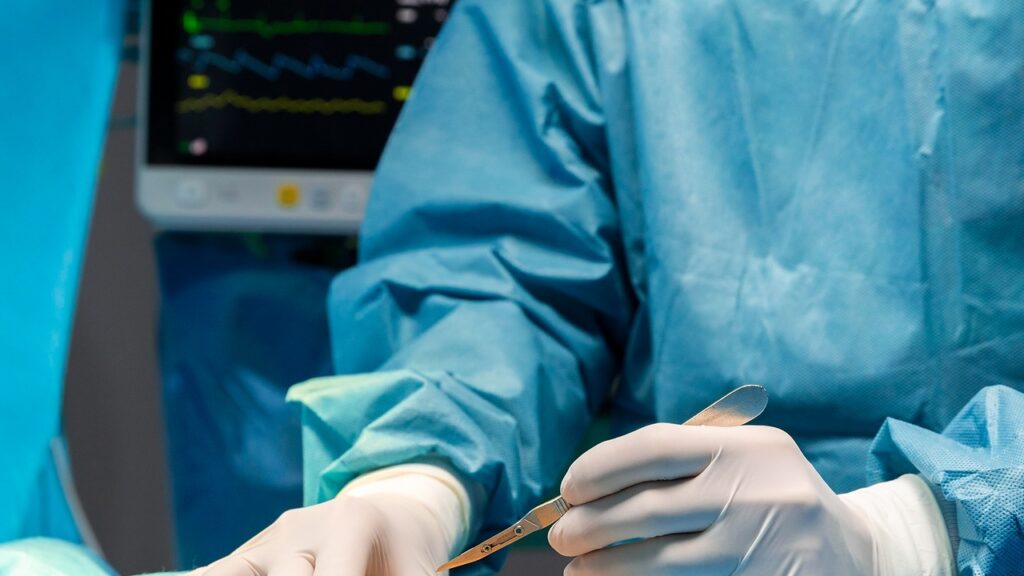Last Updated on November 4, 2025 by Bilal Hasdemir

When you think about microdiscectomy surgery, knowing how long it takes and what to expect is key. At Liv Hospital, we focus on your safety and comfort. We use expert care and the latest surgical techniques.
Microdiscectomy is a small surgery to remove a herniated disc in the lower back. It helps relieve nerve pressure and symptoms. This surgery is for when a herniated disc presses on the spinal nerves, causing pain and numbness in the buttock and leg.
Going through surgery can be scary. Our team is here to give you the best care and support. We’ll be with you every step of the way.

Knowing about microdiscectomy is key for those thinking about it for back pain. It’s a surgery to ease pressure on spinal nerves from herniated discs. This method is chosen for treating certain spinal issues because it’s less invasive.
Microdiscectomy is a surgery to remove herniated disc material that presses on a spinal nerve. Its main goal is to stop pain, numbness, and weakness from nerve pressure. It helps improve life quality and lets patients get back to their usual activities.
Microdiscectomy is different from old-school back surgery because it uses smaller cuts and less damage to muscles and tissues. This means less pain after surgery and quicker healing. Surgeons use special tools like microscopes or endoscopes for more precise work.
Microdiscectomy marks a big step forward in spine surgery. It uses new, less invasive methods to treat complex spinal problems. This progress comes from better tools, imaging, and understanding of the spine.

Micro back surgery, or microdiscectomy, helps with herniated discs and nerve compression in the lower back. It’s a small procedure that aims to ease pain and discomfort.
A herniated disc happens when the soft center leaks out through a tear. This can hurt nearby nerves, leading to pain, numbness, and weakness in the back and legs. Microdiscectomy removes the herniated part of the disc, easing nerve pressure.
Nerve compression can cause sciatica, numbness, tingling, and weakness in the legs. These issues arise when a herniated disc or spinal condition presses on a nerve. Microdiscectomy can remove this pressure, helping to ease symptoms.
You might need microdiscectomy surgery if a herniated disk in your lower back is causing serious symptoms. Surgery is considered when other treatments don’t work and symptoms like lasting weakness, pain, or tingling don’t go away.
Here are some reasons why microdiscectomy might be needed:
Microdiscectomy surgery is quick, lasting about an hour to an hour and a half. Several factors can change how long it takes.
The surgery usually lasts between 1 to 1.5 hours. This time lets the surgeon remove the herniated disc material. This is what’s pressing on the nerves. According to our resources, the exact technique used can affect the time.
Several things can change how long the surgery takes. These include:
While the average time is a good guide, each case can be different.
Many patients can go home the same day after surgery. This is because it’s a minimally invasive procedure. But, some might need to stay overnight. This is usually if there are concerns about complications or if the patient has other health issues.
The choice between going home the same day or staying overnight depends on the patient’s condition. It also depends on their ability to recover safely at home.
In summary, microdiscectomy surgery usually lasts 1 to 1.5 hours. But, how long it takes and whether you can go home the same day or need to stay overnight can vary. This depends on the case’s complexity and the patient’s health.
Exploring the microdiscectomy procedure step by step helps patients understand what’s ahead. This minimally invasive surgical technique treats herniated discs in the lower back.
The first step is giving the patient local or general anesthesia for comfort. Then, the patient lies on their stomach. This position lets the surgeon reach the affected disc.
A small incision, about an inch long, is made on the back. It’s placed carefully to avoid harming too much tissue. This helps in a quicker recovery. Medical research shows that precise placement is key for success.
The surgeon uses a microscope and special tools to remove the herniated disc. They gently move the tissue around to get to the disc.
Once the disc material is out, the incision is closed with stitches or staples. The patient then goes to the recovery room for care. They are watched for any issues.
Knowing about the microdiscectomy procedure can make patients feel more ready. It helps them understand their treatment and recovery better.
Getting ready for microdiscectomy involves important steps. These steps can greatly affect your surgery’s success and how well you recover. We’ll help you prepare for a smooth and worry-free experience.
We do several tests before your surgery to check your health and find any risks. These might include blood tests, imaging, and looking at your medical history. Our team will tell you which tests you need and when to do them.
Some medicines, like blood thinners, might need to be changed or stopped before surgery. Tell us about all the medicines you’re taking, including supplements and over-the-counter drugs. Our healthcare provider will help you safely change your medications.
On surgery day, bring important items like your ID, insurance cards, a list of your medicines, and someone to drive you home. Wear comfy, loose clothes to make your day easier.
Mental readiness is as key as physical. Try deep breathing, meditation, or visualization to calm your nerves. Our team is here to answer any questions and support you.
By following these tips and staying informed, you can have a successful microdiscectomy and a smooth recovery. If you have any questions or concerns, don’t hesitate to contact our healthcare team.
Knowing the recovery timeline after a lumbar microdiscectomy is key. It helps patients plan their recovery well. Most people can start with light activities in a few days. They usually get back to full strength in 6 to 10 weeks.
The first 24 to 48 hours are very important. You might feel stiff or sore in your back. This is normal as your body heals. Rest well and manage your pain as advised by your doctor.
Following your doctor’s post-surgery care is also vital. It helps you recover smoothly.
In the first week, you’ll likely start feeling better. While it’s good to rest, some gentle movements help. Avoid heavy lifting, bending, or hard work.
Weeks 2-6 see you getting more active. You’ll notice big improvements in pain and moving around. Stick to your doctor’s rehab plan for the best results.
By 6 to 10 weeks, most people feel fully recovered. Keep following your doctor’s care plan and go to all follow-up visits. A healthy lifestyle, including exercise and a balanced diet, also helps keep your back healthy long-term.
Physical therapy is often needed after surgery to strengthen the muscles around the spine. Every patient’s recovery is different. A custom physical therapy plan can greatly improve the results of microdiscectomy surgery.
Patients usually start physical therapy a few weeks after surgery. This is when the initial healing starts. Our healthcare team will tell you when to start based on your recovery.
Physical therapy for microdiscectomy patients includes stretching, strengthening, and aerobic exercises. Gentle exercises like pelvic tilts, knee to chest stretches, and short walks are recommended. It’s essential to follow the physiotherapist’s instructions to avoid overexertion and ensure proper healing.
Core strengthening is key in physical therapy after microdiscectomy. Exercises that target the abdominal and back muscles improve posture. They also reduce the risk of future injuries and enhance spinal stability.
While recovering, avoid heavy lifting, bending, or twisting. Our patients are advised to gradually return to their normal activities. This gradual approach helps prevent complications and ensures a successful recovery.
It’s important to know the risks and complications of microdiscectomy before surgery. This surgery, like any other, has risks. Knowing these can help patients make better choices about their health.
After microdiscectomy, some common side effects are pain, swelling, and bruising. Some might feel temporary numbness or weakness in their legs. These effects are usually mild and go away in a few weeks.
Though rare, serious problems can happen. These include infection, excessive bleeding, or nerve damage. Some might see a recurrence of herniated disc or new symptoms.
Knowing when to call your doctor is key. If you feel increasing pain, fever, or worsening neurological symptoms, reach out right away. Quick action can help manage problems.
Some factors can raise the risk of complications. These include age, overall health, and previous spinal surgeries. Talking to your doctor about these can help understand your risk.
Understanding the risks and complications helps patients prepare for surgery and recovery. This ensures the best results possible.
Studies show that microdiscectomy greatly improves life quality for those with nerve compression symptoms. This surgery is effective for treating lumbar disc herniations.
Medical literature confirms the success of microdiscectomy. Most patients see relief from sciatica and lower back pain after the surgery. Success rates are often between 80% and 90%, based on patient selection and surgical skill.
Several factors impact microdiscectomy’s long-term success. These include:
A study in a leading orthopedic journal found, “The long-term success of microdiscectomy depends on careful patient selection and precise surgical technique.”
“The long-term success of microdiscectomy is closely tied to careful patient selection and meticulous surgical technique.”
Orthopedic Journal
While effective, microdiscectomy may not always prevent recurrence. Studies show a low rate of needing more surgery, around 5% to 15%. Risks include:
Patient satisfaction with microdiscectomy is high. Many report a big improvement in their life quality. Surveys show satisfaction rates over 85%, with quick recovery and return to normal activities.
Every patient’s experience is different, and results can vary. Yet, the medical community agrees that microdiscectomy is effective for the right candidates.
Choosing between private microdiscectomy and insurance-covered procedures is a big decision. It affects both the surgery experience and your wallet. Understanding the differences between these options is key to making a smart choice.
Cost is a major factor in deciding between private and insurance-covered microdiscectomy. Private options might give you more control over when and with whom you have surgery. But, they can also cost more upfront.
Private microdiscectomy offers some perks. You might get in for surgery sooner and receive more tailored care. Some people like the freedom that private options provide.
Most insurance plans cover lumbar microdiscectomy if it’s medically needed. But, the specifics of what’s covered can differ a lot between plans and providers.
Before you decide, ask your insurance about coverage. Here are some important questions:
We’ve given you a detailed look at microdiscectomy. This includes what it is, how it’s done, recovery, and possible risks. Knowing these details is key for your care.
It’s important to know the test or procedure’s name, why you’re having it, and what to expect. Also, understand the risks and benefits. Our team is here to support you with top-notch healthcare, including for international patients.
Understanding microdiscectomy helps you move forward with confidence. We’re here to help you make the best decisions for your health. This way, you can get the best care possible.
Microdiscectomy is a small surgery to fix herniated discs in the lower back. It helps relieve pressure on spinal nerves.
The surgery usually lasts between 1 to 1.5 hours. But, it can vary based on individual factors.
Microdiscectomy has smaller cuts and less damage to tissue. It also leads to faster recovery times than traditional surgery.
Micro back surgery, or microdiscectomy, treats herniated discs in the lower back. It helps with nerve compression symptoms.
To prepare, you’ll have tests and evaluations before surgery. You might also need to adjust your medications and mentally prepare.
After surgery, you’ll see big improvements in 6-10 weeks. Then, your healing will keep getting better as you return to normal activities.
Start physical therapy a few weeks after surgery. It helps with recovery and strengthens your back.
Microdiscectomy is mostly safe but can have risks. These include infection, nerve damage, and herniated disc recurrence.
Microdiscectomy works well for most people. It greatly improves life quality by relieving nerve compression symptoms.
Private options might offer quicker service and more personalized care. But, insurance procedures are cheaper and have shorter waiting times.
Microdiscectomy costs vary. They depend on location, surgeon’s fees, and insurance coverage.
Many patients go home the same day. But, some might need to stay overnight based on their condition and the surgeon’s advice.
Microdiscectomy can fix current issues but doesn’t prevent future problems. Keeping your back healthy through exercise and good posture is key.
Subscribe to our e-newsletter to stay informed about the latest innovations in the world of health and exclusive offers!
WhatsApp us